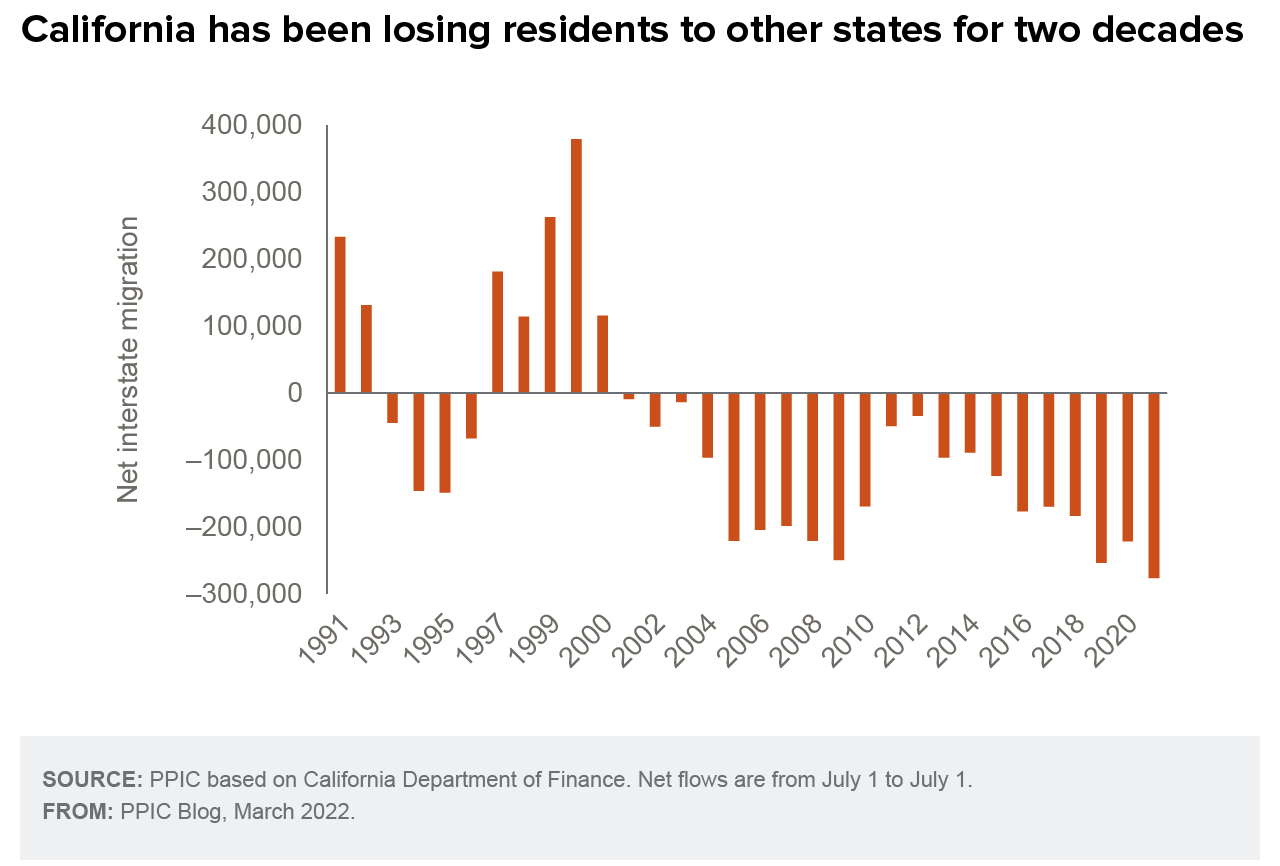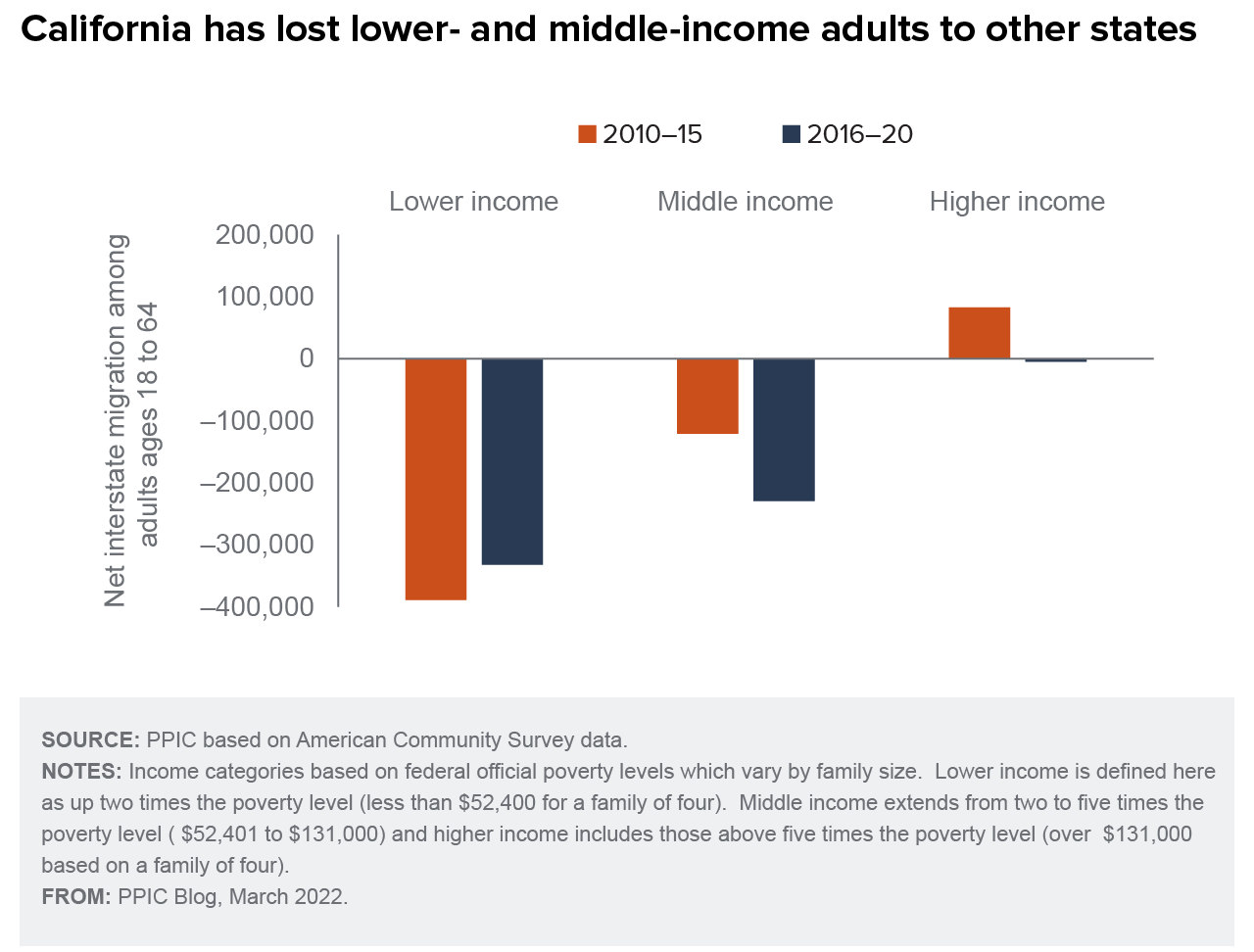California appears to be on the verge of a new demographic era, one in which population declines characterize the state. Lower levels of international migration, declining birth rates, and increases in deaths all play a role. But the primary driver of the state’s population loss over the past couple years has been the result of California residents moving to other states. It is a remarkable turnaround for California—long the epicenter of population growth in the United States. Even so, it is a continuation of a decades-long slow down.
Much has been made of the California exodus to other states, and rightly so. This migration, over the decades, has the power to reshape the state. Since 2010, about 7.5 million people moved from California to other states, while only 5.8 million people moved to California from other parts of the country. According to Department of Finance estimates, the state has lost residents to other states every year since 2001.

People who move to California are different from those who move out. In general, those who move here are more likely to be working age, to be employed, and to earn high wages—and are less likely to be in poverty—than those who move away.
Those who move to California also tend to have higher education levels than those who move out—an especially important factor given the state’s strong need for college graduates. Notably, this gain in educated residents is concentrated among young college graduates (generally, adults in their 20s) looking for opportunities as they start their careers. In recent years, though, the net flow of college graduates has slowed considerably, and perhaps even reversed during the pandemic (but still remains positive for young college graduates).
Also of note: people who move to California have higher incomes than those who move away. Some have argued that the opposite is taking place—that California’s relatively progressive and high personal income tax rates drive out higher-income residents. But the fact is that California has been losing lower- and middle-income residents to other states for some time while continuing to gain higher-income adults. In the past five years the flow of middle-income residents out of the state has accelerated and net gains among higher income adults have ceased.

Most people who move across state lines do so for housing, job, or family reasons. Since 2015, among interstate movers who cite housing as the primary reason, California has experienced net losses of 413,000 adults (according to the Current Population Survey). Net losses among those who cite jobs as the primary reason totaled 333,000 and among those who cite family 239.000. The PPIC Statewide Survey finds that 37% of Californians have seriously considered leaving the state because of housing costs.
The picture painted by these trends illustrates the economic challenges faced by many lower- and middle-income Californians. The state’s high cost of living, driven almost solely by comparatively high housing costs, remains an ongoing public policy challenge—one that needs resolution if the state is to be a place of opportunity for all of its residents.
An earlier version of this post was published on May 6, 2021.




